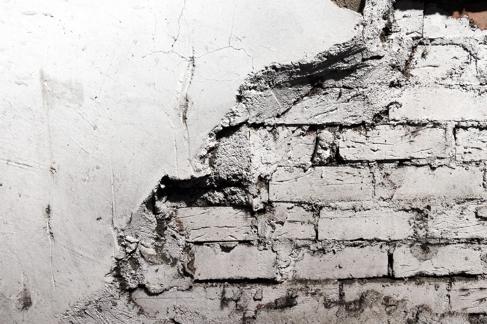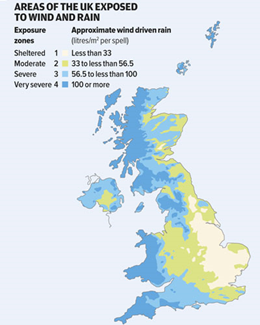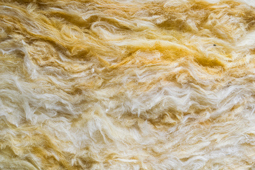
Wall insulation
Project type
Wall insulation
- If the walls of your home have no insulation, you might be losing more heat than you realised. About a third of all the heat lost in an uninsulated home escapes through the walls. By properly insulating any cavity walls or retrofitting internal or external wall insulation, you will save energy, lower carbon emissions, reduce overheating in summer and save money on your winter heating bills.
- Homes are all built from different materials with a variety of construction methods.
- Typically, in the UK they will have solid masonry walls (made of stone, brick, cob, or other traditional materials), cavity walls made from brick and/or blockwork, or be timber framed with either a masonry, timber or composite outer skin or cladding.
- Period or pre first world war homes are more usually built with solid walls or very slim cavities. Obviously, cavity wall insulation can’t be fitted to these homes.
- Houses built later than this may have cavity walls. A cavity wall is made up of two walls tied together with a gap in between, known as the cavity.
- In general, houses built from the 1990s onwards have some wall insulation to keep the heat in, but this will not be to current standards, which are constantly improving as we move towards our net zero targets in a bid to halt climate change.
How do I tell what my wall type is?
- Its not always easy to tell, but generally with a brick wall, If the bricks have an alternating pattern, with some bricks laid across the wall so you can see the smaller ends from the outside, this is likely to be a solid wall.
- If your home has cavity walls, the bricks will usually have an even pattern with all the bricks laid lengthways.
- However your wall may be timber or steel framed with a brick outer skin so you may need to seek professional advice from a surveyor.
- Your walls may be rendered in which case measuring the depth of the wall at a door opening may give you a clue as to the construction. If a brick wall is more than 260mm thick, then it probably has a cavity. A narrower wall is probably solid. Stone walls may be thicker still but are usually solid.
What kind of insulation is used to fill a cavity wall?
- In the past, foam was commonly used. Today an installer is more likely to use blown mineral wool fibres or polystyrene beads.
How is this done?
- Inserting cavity wall insulation retrospectively is not a DIY job. You’ll need to appoint a specialist registered installer who can self-certify the work and will submit a building regulations application to your local authority on your behalf. The installer should carry out a borescope inspection before carrying out the work to see if your walls are already filled and to check the condition of the cavity and the wall ties.
- The cavity must be at least 50mm wide.
- The cavity has to be clear of rubble or you will get cold spots
- The installer will drill small holes externally all around your house, about one metre apart and then blow the insulation in through them until the cavity is full. The holes are only about 22mm in size and will be filled with mortar so they will be virtually invisible.
Is every house suitable for cavity wall insulation?
- No, even if your wall is the right type and your cavity is suitable, there are environmental factors which must be considered in order to prevent damp occurring.
- Areas across the UK are zoned into exposure areas of 1, 2, 3 and 4, depending on exposure and the likelihood and intensity of wind driven rain.
- Your home will be exposed to severe levels of wind-driven rain if it is located in an unsheltered position, and not protected by trees or other buildings. If a cavity in these locations is fully filled with insulation, rain could penetrate the outer wall, bridge the cavity via the insulation material and transfer moisture to internal walls, causing damp and mould.
- If your property is located in a severe exposure zone a special pre-installation survey should be completed prior to any installation and in many cases extra preparations will be required. In some cases cavity wall insulation cannot be installed at all.

- Your home must be well maintained, without any cracks in the brickwork or rendering or defective crumbly mortar.
- Properties without a damp proof course (DPC) or where the DPC is too low (typically less than 125mm from the ground) and a French drain has not been installed are generally not suitable for cavity wall insulation.
- If your home is terraced or semi-detached a cavity barrier should be installed at the boundary with your neighbour’s house.
- If you live in a flat, then you won’t be able to have just your flat insulated – you will usually need to get agreement from everyone including the freeholders to insulate the whole block.
- Listed Buildings and buildings in Conservation Areas may require planning permission, so always check with your Local Planning Authority prior to installing cavity wall insulation.
How do I find an installer?
Your installer should be a member of one of these organisations:
- The National Insulation Association (NIA)
- The Cavity Insulation Guarantee Agency (CIGA)
- The British Board of Agrément (BBA)
You should check that your installer is signed up to a code of professional practice and that the installation is guaranteed for 25 years by CIGA, or through an independent insurance-backed guarantee.
Costs and savings
It’s not possible to estimate the costs as every home is unique in size and design, but generally you can expect to recoup the installation costs in around five years.
I’ve heard about problems with cavity wall insulation. What should I look out for?
- If you notice problems with your walls after having cavity wall insulation installed, like damp and mould, you should first call the company who carried out the installation. They will survey the property and arrange for remedial work to be carried out to fix the problem or for removal of the insulation if necessary.
- If the installer is not willing to help or no longer exists, then contact CIGAto establish whether you have a 25-year CIGA Guarantee. If you do, they should be able to help resolve the issue under the terms of the guarantee. If you don’t have a CIGA guarantee, check your paperwork from the time of installation to see if you have an independent insurance backed guarantee which provides a similar level of cover. This usually transfers with ownership.
- Damp issues may be entirely unrelated to cavity wall insulation, and may be due to inadequate ventilation, heating, or home maintenance.
- If you can’t get help from your installer or the guarantee provider, your final option is to speak to a different accredited specialist company that can carry out the necessary work. For removal you should use a specialist in cavity wall insulation removal accredited with a cavity wall insulation scheme like CIGA or BBA.
I don’t have cavity walls; can I still insulate them?
- Yes, you can still insulate solid walls or walls where the cavity is not suitable for insulation. Bear in mind this will cost more and be more disruptive than simply insulating a cavity, but you will probably save more on your heating bills because the solution will be even more energy efficient.
- Listed Buildings and buildings in Conservation Areas may require planning permission, so always check with your Local Planning Authority prior to installing internal or external wall insulation. Insulation installed to the outside needs to be suitable to withstand the weather and be well fixed to the outside walls. It might also need to be covered in a weatherproof material such as render. Be careful not to block any ventilation openings in the wall needed for room or combustion appliance ventilation, or weepholes that allow moisture that manages to get into the cavity from getting out.
How much will it cost to insulate my solid walls?
- It’s not possible to estimate the costs as every home is unique in size and design, but typically you might expect external wall insulation to cost around £12,000, depending on finish for a typical 3-bedroom, semi-detached house. Internal insulation for the same house might cost around £8,500.
- You might be able to reduce these costs by carrying out the work at the same time as other home improvements or by not tackling the whole house at once. If your walls need repointing or re-rendering you might want to get quotes for a complete refurbishment including insulation as it is probably cheaper to do everything together, particularly if you’ll need scaffolding.






